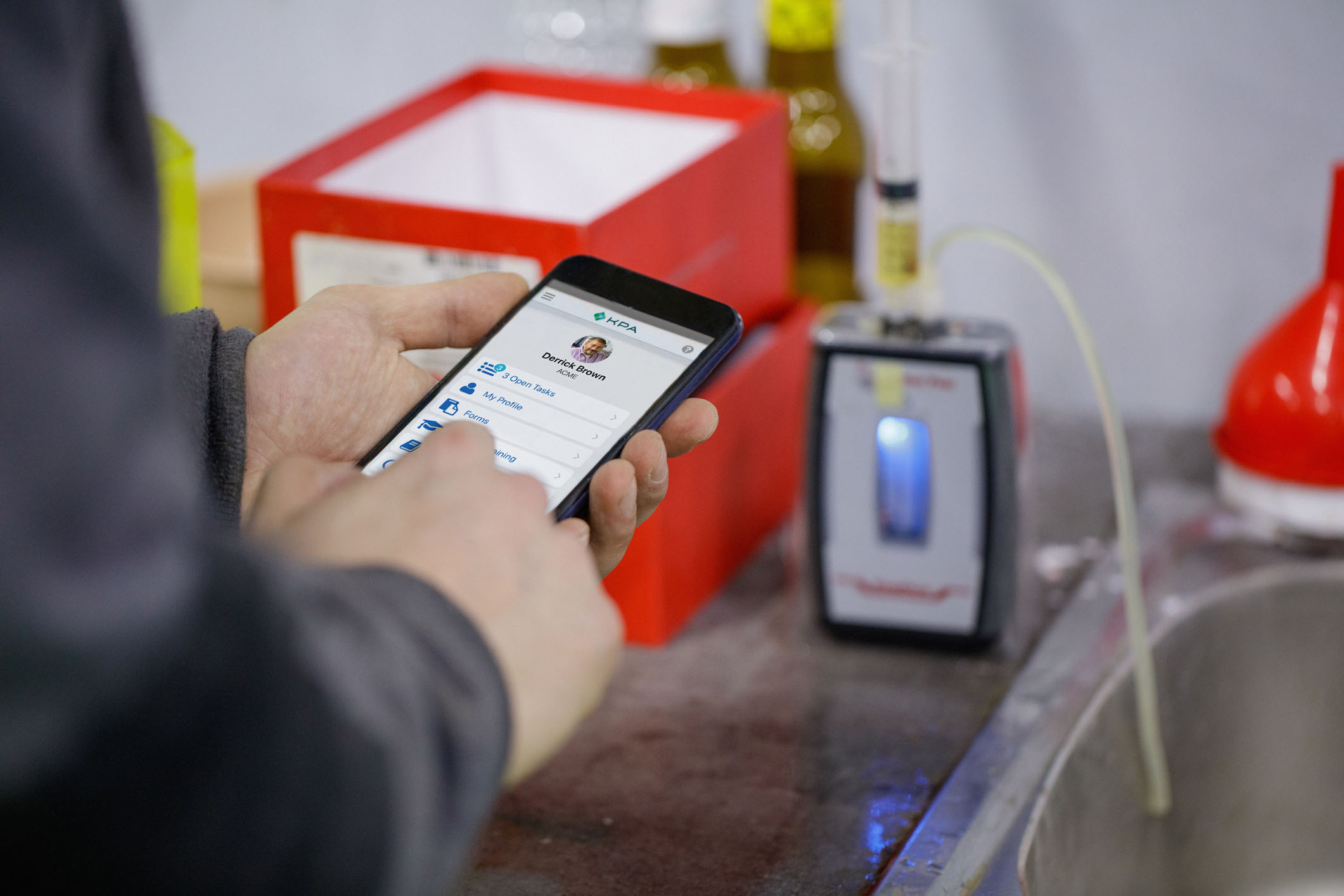3 Reasons to Adopt a Mobile EHS Strategy
A successful safety program takes a commitment from leadership, worker participation, and a culture that fosters participation and gives everyone the time and resources they need to excel. It’s also important to focus on providing practical solutions to everyday challenges – and that’s where digital solutions come in.
What Studies Show
Recently, Verdantix. an independent ESH, ESG, and sustainability research and advisory firm, polled 301 EHS leaders about software use cases. The survey showed that close to a majority of organizations (48%) said they planned to use software for EHS training, learning, and development (L&D) processes in 2021.

Another 40% said they’re experiencing wide usage of technology for incident management across operations. And, 44% said they’re using technology for EHS documentation and for managing change at multiple facilities.

This Verdantix Global Corporate Survey also revealed insights into where organizations are at with mobile adoption as part of a digital EHS management strategy. Verdantix reported that:
- Mobile applications saw the highest level of usage out of all IoT devices with 18% of firms fully rolling out mobile EHS solutions across the entire organization
- 35% of respondents have partially rolled out and are looking to increase the use of mobile applications in 2021 because they’re satisfied with the results they’re seeing
- 16% said they’re piloting technology
This is all great news, and here at KPA, we’re thrilled to hear this!
But, there are many organizations that haven’t yet adopted mobile technology for workplace safety. For instance, Verdantix reported that 9% of respondents who have partially rolled out mobile technology don’t have plans to further disseminate it, 18% said they don’t have any current plans to roll out mobile, and another 4% said they’ve partially rolled out mobile but are looking to reduce technology.
For anyone out there whose organization hasn’t fully adopted mobile technologies, KPA is here to help guide you in understanding the benefits and value that mobile technology can deliver for your unique work environment. And, we’ve put together some reasons below on why it’s so important to adopt a mobile EHS strategy.
3 reasons for mobile adoption
First, remember that regulatory standards, such as ANSI, ISO, and OSHA all require five core elements be included in the integration of a safety program to achieve success:
Each of these needs to be considered independently but also collectively as part of a comprehensive safety program. And, developing an EHS mobile strategy can go a long way to meeting applicable regulatory requirements and furthering your overall goal of maintaining a safe work environment.
Second, consider the wide range of issues that mobile for EHS can be used to address. For example:
- EHS observations
- Incident management
- Lone workers
- EHS workflow and management
- Auditing
- Inspections
- Training and delivery
- Hazard communications and alerts
- Location monitoring and geofencing
- Management of change
In way of example, let’s look at how mobile can be applied to audits. This once paper-heavy process can be completely streamlined completely by using a mobile device. And, audits and inspections can be completed in just a few minutes. These audits will be easier to track, and you’ll be better able to take actions in real-time when data has been inputted into a digitized solution.
Next let’s consider incident reporting. Mobile applications can provide next-level improvements to this process. By using auto-populating inputs, the process will be less time-consuming and a virtual snap for workers to complete via an app. And, many mobile applications have multiple information inserts built in, so voice recordings and photos can be added to create a richer data stream.
And, let’s take a look at EHS training and L&D—the most common use cases for EHS software. Being able to deploy training and L&D via a mobile device can elevate your safety culture. And, by giving workers the ability to access courses onsite via a tablet or another mobile device, EHS managers have a way to deploy new training techniques, such as interactive training, gamification, and microlearning alongside notifications, mobile apps to keep EHS in the front of employees’ minds. It also lets workers engage directly with your initiatives and become more invested at improving the safety of their own working conditions.
Third, empowering workers to control important EHS touchpoints like these on mobile devices gives organizations an upper hand because worker participation is a critical factor that drives safety program success. Your employees are uniquely suited to provide information in real-time regarding workplace issues and exposures. So, for your safety program to be effective, it’s paramount to involve your workers in the day-to-day safety process. The bottom line: Mobile gives workers a convenient and practical way to stay engaged.
Building momentum for mobile
To get workers to buy into mobile, start at the top. Educate management on their essential role of fostering a culture of participation—a culture where reporting workplace issues is encouraged and safety is communicated as a top priority.
Next, make sure employees are provided with adequate time and resources to perform essential functions, such as reporting issues, performing training, completing audits and inspections, etc. via mobile technologies. If you believe workers lack the time or the resources needed to do this, work with management to change things. The goal is to avoid a situation where workers don’t participate or put safety on the backburner behind other initiatives.

Finally, it’s important to provide workers with the resources for the job at hand, and to recognize where and how they can participate in the safety program. This means thinking about where they are and when it’s necessary. This is one of the most critical ways mobile technology can be leveraged.
EHS mobile application rollout can certainly come with questions, and KPA can help guide you through the process. We understand the common barriers organizations face, including connectivity and determining the type of business investment you’ll need to make to adopt and integrate mobile applications into your day-to-day operations.
The good news is that EHS apps have come a long way. Offline capabilities are now built into many EHS apps, so that’s less of an issue overall these days. There’s also a large market for EHS mobile applications in the workplace, and KPA can help you identify how to adapt them for use in your workplace. Whether you need to streamline workflows to ease the burdens placed on the EHS manager or connect workers with push notifications and training courses, we can help with your overall mobile adoption practices. Contact us today.

